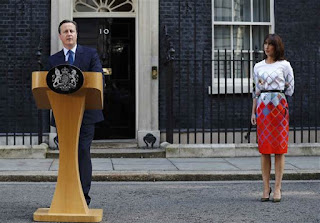The May Doctrine
The Prime Minister on Brexit, Trump,
the return of the state and enticing Labour supporters to
vote Tory.
1. The Smart State
Quiet resolve: if you read Theresa May’s speeches carefully, you will notice that it’s a recurring phrase she uses when explaining the motivation for Brexit. With “quiet resolve”, the Prime Minister likes to say, the British people voted to leave the European Union. It’s also a phrase that could characterise her unflashy approach to politics and, more specifically, to the premiership-making-or-breaking task of delivering Brexit. Talk to May – perhaps the most inscrutable politician to reach 10 Downing Street in modern times and the first sitting home secretary to become prime minister since Lord Palmerston in 1855 – and certain words and phrases repeat in her conversation: civic duty, responsibility, playing by the rules, the common good.In May’s speech to the 2002 Conservative party conference – through which she first came to national prominence – she called her party “nasty” and complained that Tony Blair’s Labour government, which had won its second landslide election victory the year before, had borrowed “some of our rhetoric”. Something similar could be said in reverse of May’s discourse since becoming prime minister – because, with its echoes of some of the pro-state interventionist rhetoric of Ed Miliband and Vince Cable, it is strikingly different from what we have come to expect from the Conservatives.
David Cameron came to the leadership eager to soften the image of the Tories. In his early tree-hugging, hoody-embracing, Notting Hill-inflected phase, he announced with considerable banality that there was such a thing as society, as if anyone doubted it, but: “It’s just not the same thing as the state.” For all its soft-focus social liberalism, Cameron’s government was resolutely “neoliberal”, determined to cut back the state and reduce public spending to 35 per cent of GDP. In power, bolstered by the Liberal Democrats, he and his chancellor, George Osborne, were doctrinaire austerians but also liberal globalisers, with an open immigration policy and mercantilist foreign policy. Osborne was also a self-described “liberal interventionist”.
May is moving the Tories in a different direction, and the public and her party are warming to her in a way they never did with Cameron. Tory MPs say that, unlike her predecessor, she has a “people” and she is far more at ease with the average Tory activist than the Cameroons were (one could always imagine them muttering about “swivel-eyed loons” as they left a village fete). It was emblematic that, when May sacked George Osborne at the start of her premiership, she is reported to have told him to get to know the party better.
The vote for Brexit has unlocked possibilities for her and created an opportunity, she believes, for a new political economy. It was Brexit that opened the door of 10 Downing Street to her, not least because the alternatives – Boris Johnson, Andrea Leadsom, Michael Gove – were so wayward and divisive.
Unlike Boris Johnson, who seems to have no consistent or coherent world-view, Theresa May believes in an interventionist, even moral, state. “The key thing about her is her belief in the efficacy and, so to speak, compensatory function of the state, the important positive functions – you might even say the moral functions of the state,” said the philosopher John Gray, whose recent New Statesman essays have been read with interest in No 10.


Comments
Post a Comment